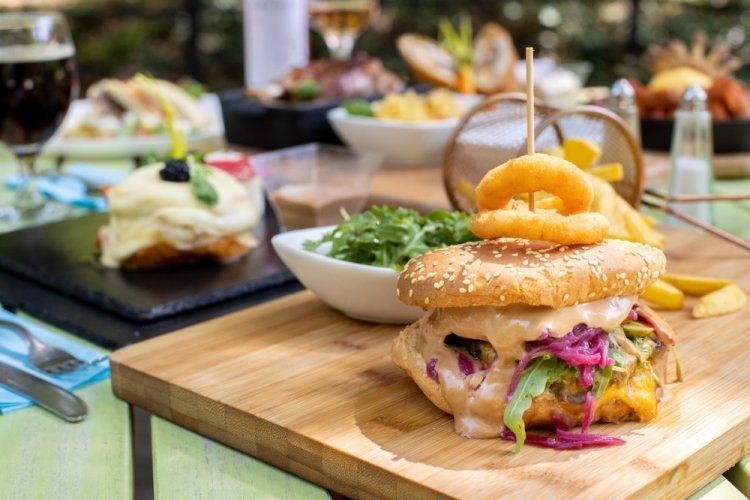Investing in a craft beer restaurant can be an exciting and lucrative venture, given the growing popularity of craft beers and the social experience they offer. However, like any business endeavor, it requires careful planning and consideration. Here are some key factors to keep in mind when investing in a craft beer restaurant.
Market Research
Before making any investment, it's crucial to conduct thorough market research. Understand the local demand for craft beer and identify your target audience. Consider the following:
- Demographics: Who are the potential customers in your area? Look for a concentration of craft beer enthusiasts, young professionals, and individuals who enjoy dining out.
- Competition: Analyze existing craft beer establishments in the vicinity. What are their strengths and weaknesses? Identifying gaps in the market can help you position your restaurant uniquely.
- Trends: Stay updated on current trends in the craft beer industry. Knowing what types of beers are gaining popularity can inform your menu choices.
Location
The success of your craft beer restaurant largely depends on its location. Consider the following aspects:
- Accessibility: Ensure your restaurant is easily accessible by car, public transportation, and foot traffic. Adequate parking is also a key factor.
- Visibility: A location with high visibility can attract more walk-in customers. Consider areas with high foot traffic, such as downtown districts or popular shopping areas.
- Community Vibe: Choose a location that aligns with the atmosphere you want to create. A vibrant, trendy neighborhood might attract a younger crowd, while a suburban location could appeal to families.
Financial Planning
Investing in a craft beer restaurant involves significant financial outlay. It's essential to plan your finances carefully:
- Initial Investment: This includes costs for leasing or purchasing a location, renovations, kitchen and bar equipment, initial inventory, and marketing.
- Operating Costs: Consider ongoing expenses such as rent, utilities, staff wages, insurance, and maintenance.
- Revenue Projections: Estimate your potential revenue based on market research and similar establishments. This will help you understand how long it might take to break even and start making a profit.
- Financing Options: Explore different financing options, such as personal savings, loans, or investor partnerships. Ensure you have a solid financial cushion to cover unexpected expenses.
Licensing and Regulations
Operating a craft beer restaurant requires various licenses and permits. Ensure you are fully compliant with local regulations:
- Liquor License: Obtaining a liquor license can be a complex and costly process. Start this process early, as it can take several months.
- Health and Safety Permits: Ensure your restaurant meets all health and safety standards, including food handling, sanitation, and fire safety.
- Zoning Laws: Verify that your chosen location is zoned for a restaurant and bar. Some areas may have restrictions on serving alcohol.
Menu and Beer Selection
Your menu and beer selection are critical to attracting and retaining customers:
- Craft Beer Selection: Offer a diverse range of craft beers, including local brews, seasonal options, and unique styles. Rotating your beer selection can keep customers coming back to try new offerings.
- Food Pairings: Develop a menu that complements your beer selection. Consider offering classic pub fare as well as more sophisticated options to cater to different tastes.
- Quality and Consistency: Ensure that both your food and beer offerings are of high quality and consistent in taste and presentation.
Marketing and Branding
Effective marketing and branding are essential for building a loyal customer base:
- Brand Identity: Create a strong brand identity that reflects the unique aspects of your craft beer restaurant. This includes your logo, decor, menu design, and overall ambiance.
- Online Presence: Develop a professional website and maintain active social media profiles. Share engaging content, such as behind-the-scenes looks at your brewing process, upcoming events, and new beer releases.
- Local Engagement: Participate in local events, sponsor community activities, and collaborate with other local businesses to increase your visibility and build relationships within the community.
Staff and Training
Your staff plays a crucial role in the customer experience:
- Hiring: Hire knowledgeable and passionate staff who are enthusiastic about craft beer and customer service.
- Training: Provide comprehensive training on beer knowledge, proper pouring techniques, food pairings, and customer service skills.
- Retention: Foster a positive work environment to retain your staff. Happy employees are more likely to provide excellent service and contribute to a positive atmosphere.
Investing in a craft beer restaurant can be a rewarding endeavor, but it requires careful consideration and planning. By conducting thorough market research, choosing the right location, planning your finances, ensuring regulatory compliance, curating an appealing menu and beer selection, implementing effective marketing strategies, and hiring and training a passionate staff, you can set your craft beer restaurant up for success. With dedication and attention to detail, you can create a thriving establishment that stands out in the competitive craft beer industry.















